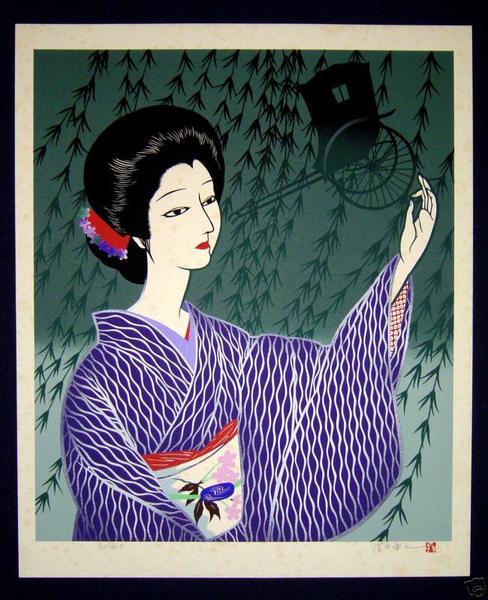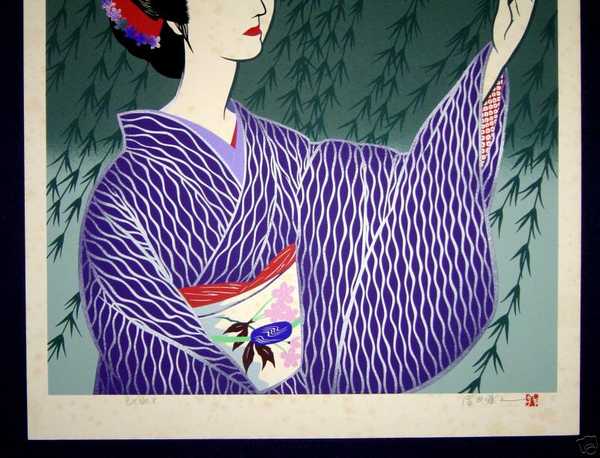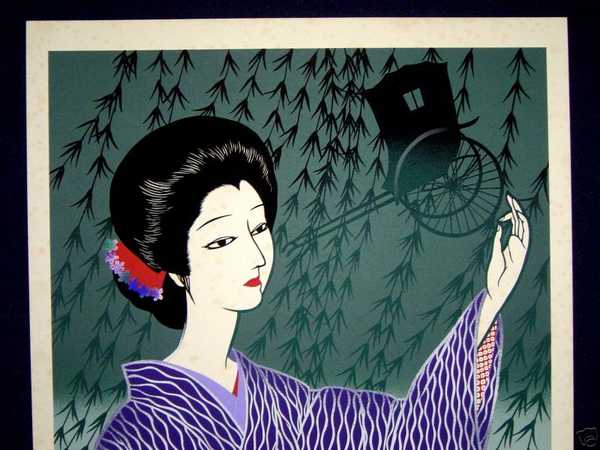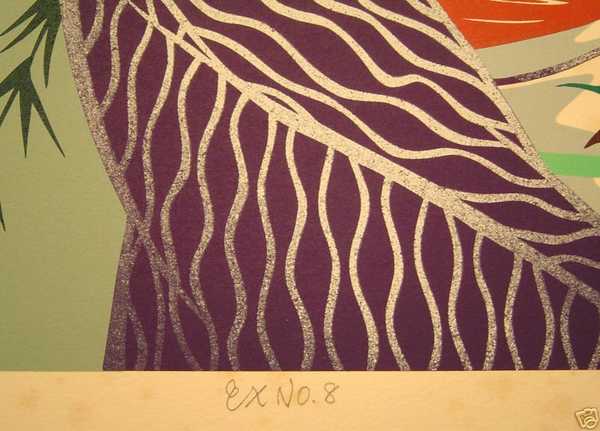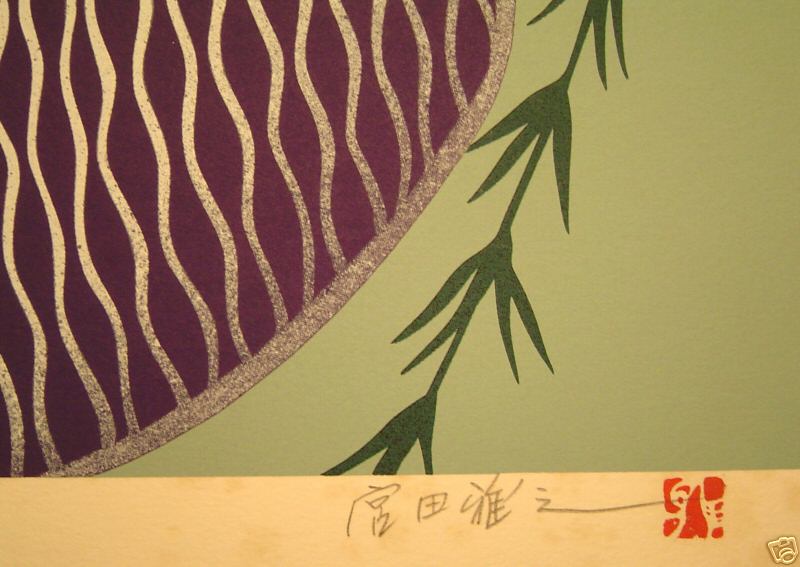| | |
| Artist: | Miyata Masayuki (1926-1997) — 宮田 雅之 |
| Title: | Willow Bijin |
| Series: | |
| Date of first edition?: | circa 1970-1990 |
| Publisher (first edition)?: | Not Set |
| Publisher (this edition)?: | Not Set |
| Medium (first edition): | Woodblock |
| Medium (this edition): | Woodblock |
| Format (first edition): | Double Oban
|
| Format (this edition): | Double Oban |
| DB artwork code: | 39918 |
| Notes (first edition)?: |
|
| Notes (this edition)?: |
| The following information was taken from the original web listing of this artwork. Note that there may be some inaccuracies:
Monday, 27 November 2006
You are bidding on an EXTRA LARGE very beautiful and rare LIMITED-NUMBER original Japanese woodblock print “Willow Bijin” PENCIL SIGNED by the famous Showa Shin Hanga woodblock print master Miyata Masayuki (1926-1997) made in Showa Era. This is the 8th print of limited edition. The print size is 16 1/2 x 20 1/4 inches, which is much larger than the traditional Shin Hanga woodblock prints. The colors, which are vivid and vibrant, are in layers. The artist’s PENCIL SIGNATURE in Kanji, his chop mark; and PENCIL WRITING OF THE NUMBER OF THE PRINT “EX NO.8” are in the bottom border of the print. You can clearly tell it is his handwritten in pencil by the depth of pencil indentation into the original Japanese mulberry paper. Four borders are intact. This woodblock print is not attached to any backing paper or cardboard. Except for some minor foxing dots as shown in the photos, this woodblock print is in good condition. |
|
| Artist Bio: |
Miyata Masayuki (宮田 雅之), was born in Tokyo in 1926. He is mainly known as a kiri-e (papercutting) artist. He was discovered by the famous writer Tanizaki Jun'ichiro. A few years before his death, in 1995, he was selected as the year's official artist for the United Nations. He made illustrations for modern publications of Japanese classic literature, including Oku no Hosomichi (The Narrow Road to Oku), The Tale of Genji, and The Tale of the Bamboo Cutter. Still, he also made woodblock prints that were mainly executed in the style of papercuttings. He is an artist that is much more known in the East than in the West.
|
|


